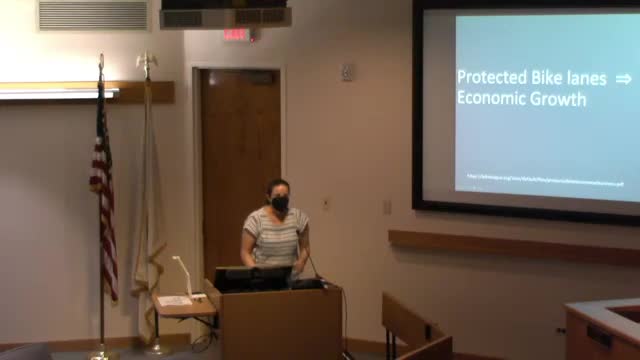Bike lanes boost economy and reduce traffic congestion
August 20, 2024 | Skokie, Cook County, Illinois

This article was created by AI summarizing key points discussed. AI makes mistakes, so for full details and context, please refer to the video of the full meeting. Please report any errors so we can fix them. Report an error »

During a recent government meeting, discussions centered on the economic benefits of protected bike lanes, highlighting their role in reducing traffic congestion and promoting healthier communities. Advocates argued that expanding car lanes does not alleviate congestion; rather, it attracts more vehicles, leading to increased frustration among drivers and a negative impact on family dynamics.
The conversation emphasized that protected bike lanes not only encourage cycling but also enhance safety for cyclists. Studies indicate that cyclists are more likely to choose protected lanes due to the perceived safety, which in turn reduces the number of cars on the road. This shift contributes to decreased traffic congestion and lowers air pollution levels, addressing immediate health concerns such as asthma and diabetes.
A study conducted in Toronto revealed a significant 38% reduction in collisions between cyclists and cars following the installation of bike lanes, underscoring the safety benefits of such infrastructure. The economic implications are substantial; protected bike lanes are linked to increased property values, improved worker recruitment for businesses, and heightened retail visibility and sales.
Overall, the meeting underscored the multifaceted advantages of investing in protected bike lanes, framing them as a crucial element in fostering economic growth and enhancing community well-being.
The conversation emphasized that protected bike lanes not only encourage cycling but also enhance safety for cyclists. Studies indicate that cyclists are more likely to choose protected lanes due to the perceived safety, which in turn reduces the number of cars on the road. This shift contributes to decreased traffic congestion and lowers air pollution levels, addressing immediate health concerns such as asthma and diabetes.
A study conducted in Toronto revealed a significant 38% reduction in collisions between cyclists and cars following the installation of bike lanes, underscoring the safety benefits of such infrastructure. The economic implications are substantial; protected bike lanes are linked to increased property values, improved worker recruitment for businesses, and heightened retail visibility and sales.
Overall, the meeting underscored the multifaceted advantages of investing in protected bike lanes, framing them as a crucial element in fostering economic growth and enhancing community well-being.
View full meeting
This article is based on a recent meeting—watch the full video and explore the complete transcript for deeper insights into the discussion.
View full meeting
